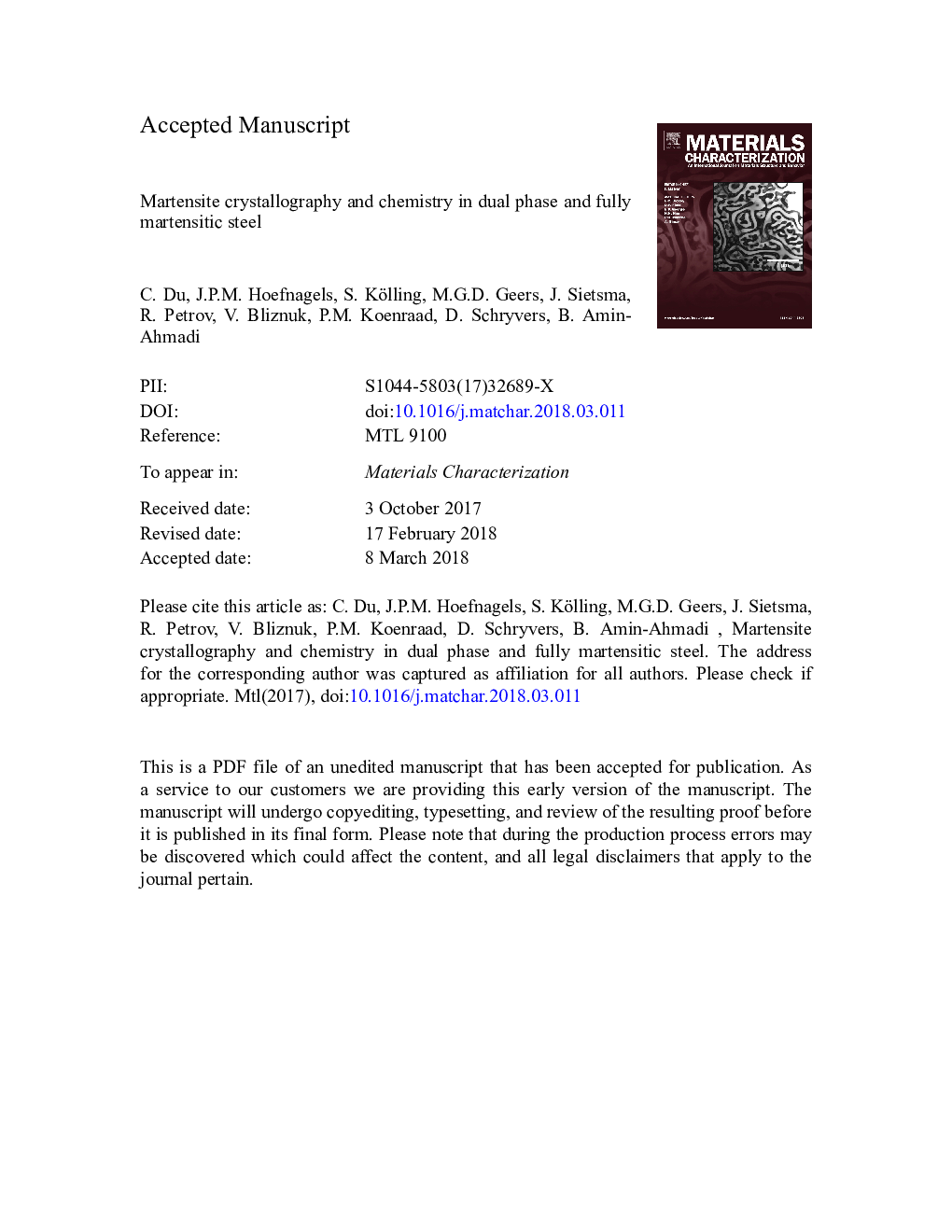| کد مقاله | کد نشریه | سال انتشار | مقاله انگلیسی | نسخه تمام متن |
|---|---|---|---|---|
| 7969347 | 1514348 | 2018 | 25 صفحه PDF | دانلود رایگان |
عنوان انگلیسی مقاله ISI
Martensite crystallography and chemistry in dual phase and fully martensitic steels
ترجمه فارسی عنوان
کریستالوگرافی مارنزیت و شیمی در فولادهای دو مرحله ای و به طور کامل مارنزیتی
دانلود مقاله + سفارش ترجمه
دانلود مقاله ISI انگلیسی
رایگان برای ایرانیان
کلمات کلیدی
مارتنزیت لات، فولاد دو مرحله ای، شناسایی متغیر، رابطه گرایش قره جوموف-ساچ، جداسازی کربن،
موضوعات مرتبط
مهندسی و علوم پایه
مهندسی مواد
دانش مواد (عمومی)
چکیده انگلیسی
Lath martensite is important in industry because it is the key strengthening component in many advanced high strength steels. The study of crystallography and chemistry of lath martensite is extensive in the literature, however, mostly based on fully martensitic steels. In this work, lath martensite in dual phase steels is investigated with a focus on the substructure identification of the martensite islands and microstructural bands using electron backscattered diffraction, and on the influence of the accompanied tempering process during industrial coating process on the distribution of alloying elements using atom probe tomography. Unlike findings for the fully martensitic steels, no martensite islands with all 24 Kurdjumov-Sachs variants have been observed. Almost all martensite islands contain only one main packet with all six variants and minor variants from the remaining three packets of the same prior austenite grain. Similarly, the martensite bands are typically composed of connected domains originating from prior austenite grains, each containing one main packets (mostly with all variants) and few separate variants. The effect of tempering at ~450â¯Â°C (due to the industrial zinc coating process) has also been investigated. The results show a strong carbon partitioning to lath boundaries and Cottrell atmospheres at dislocation core regions due to the thermal process of coating. In contrast, auto-tempering contributes to the carbon redistribution only in a limited manner. The substitutional elements are all homogenously distributed. The phase transformation process has two effects on the material: mechanically, the earlier-formed laths are larger and softer and therefore more ductile (as revealed by nanoindentation); chemically, due to the higher dislocation density inside the later-formed laths, which are generally smaller, carbon Cottrell atmospheres are predominantly observed.
ناشر
Database: Elsevier - ScienceDirect (ساینس دایرکت)
Journal: Materials Characterization - Volume 139, May 2018, Pages 411-420
Journal: Materials Characterization - Volume 139, May 2018, Pages 411-420
نویسندگان
C. Du, J.P.M. Hoefnagels, S. Kölling, M.G.D. Geers, J. Sietsma, R. Petrov, V. Bliznuk, P.M. Koenraad, D. Schryvers, B. Amin-Ahmadi,
